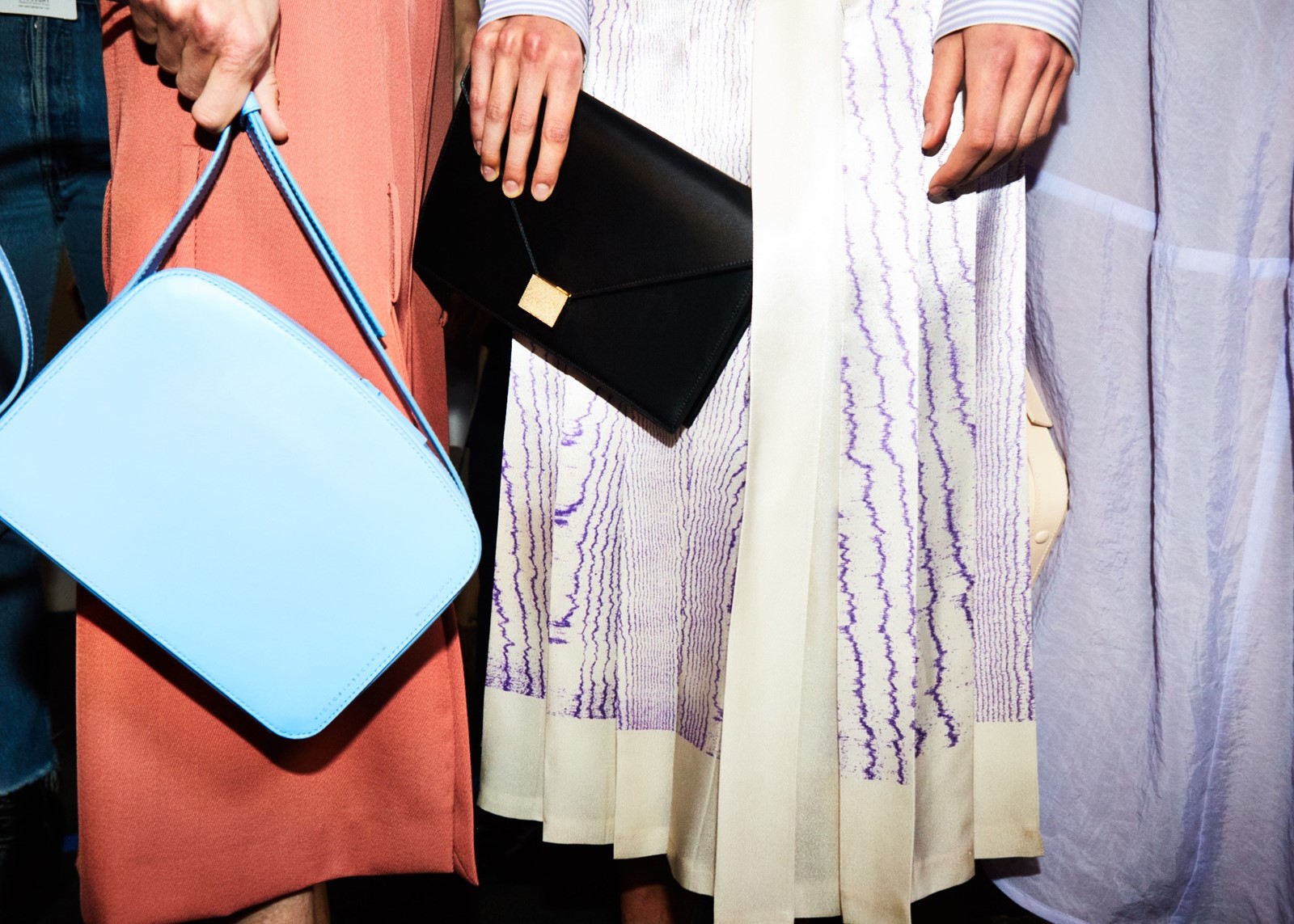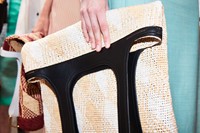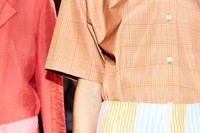Maybe there’s something about times going sour that demands something sweet? Think to the final days of the 18th century, as the guillotine fell, or the start of the 20th, before the world succumbed to war. The swirling malcontent was counterbalanced with a deluge of sugary colours – nuances of nymph’s thigh, lilacs, swooning mauves, tender blue hortensias, niles, maizes, straws – to borrow the phraseology of the couturier Paul Poiret. He wasn’t a fan, so maybe there wasn’t actually a colour approximating a creamy upper-leg – but the sensibility is very much the same. If the world seems too dark, lighten it up and your thoughts will follow suit. In shorthand: think pink.
Most fashion creatives, however are more instinctive – it’s doubtful that Victoria Beckham was thinking about an antidote to the current global turmoil (what and where? Take your pick - the problems are too frequent and serious to state here) when she proposed a sugared-almond palette for her springtime show. “Delicacy can be strong,” she said a couple of days before, working with her team and the stylist Joe McKenna to define the 35 looks she would show at New York Fashion Week. “This collection is about finding strength in the feminine.”
“Delicacy can be strong. This collection is about finding strength in the feminine” – Victoria Beckham
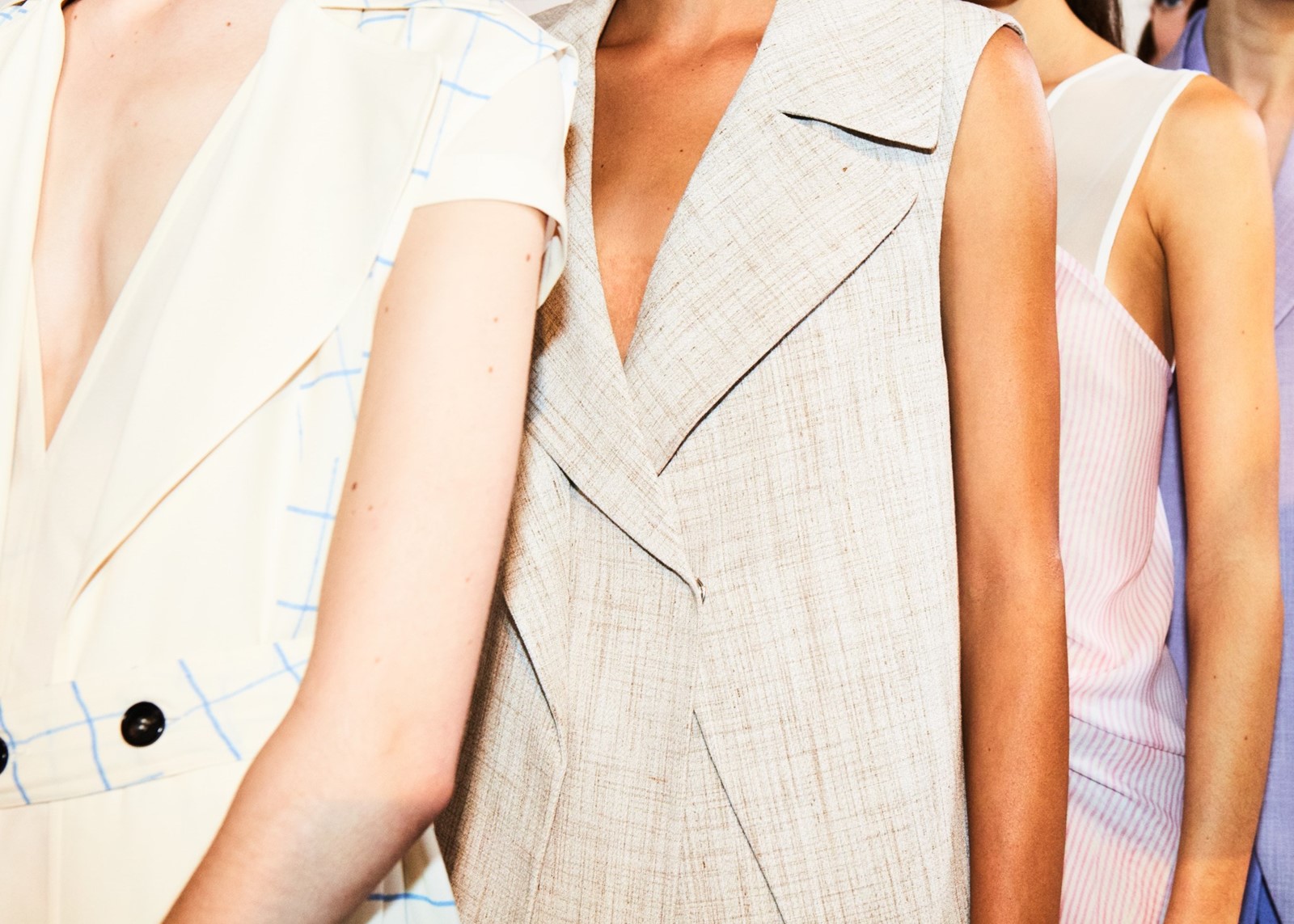
So, what was there to actually see? Plenty of colour – mostly pastel, but more of the sherbet variety, with a kick to them. Beckham dubbed them “neon pastels” due to their strength (that word again), and they were frequently paired in contrasts. One raspberry pink look wound up near-fluoro, the contrast hiked up high; and the shoes were like bonbons, in sparkling glitter finished in pistachio, red and silver, or more pastel-toned leather. There was also sheer – light, again – layered over opaques to create a sense of colour. Beckham cited the slightly naff notion of coloured tights as the inspiration, but here transmogrified them into something chic and spare. Best were a pair of pencil skirts, veiling the legs in colour.
It was those icing-sugar saccharine shades you were drawn back to again and again, though – they packed a real impact, simple as their use was. As in other times, for Beckham a pastel palette was a semaphore for femaleness – during the Rococo, the colours were synonymous with Jeanne Antoinette Poisson, Marquise de Pompadour, the mistress of Louis XV and the most culturally and politically powerful woman in France. Her personal taste impacted an entire era of decorative arts (the Sèvres porcelain factory was founded for her; she was a ferocious patron of François Boucher and Voltaire), and also profoundly shaped politics. It was her personal view of making amends with the Austrian empire that paved the way for the marriage of Marie Antoinette to the Dauphin in 1770, cementing the Franco-Austrian pact and, at the same time, sowing the seeds for the French revolution.
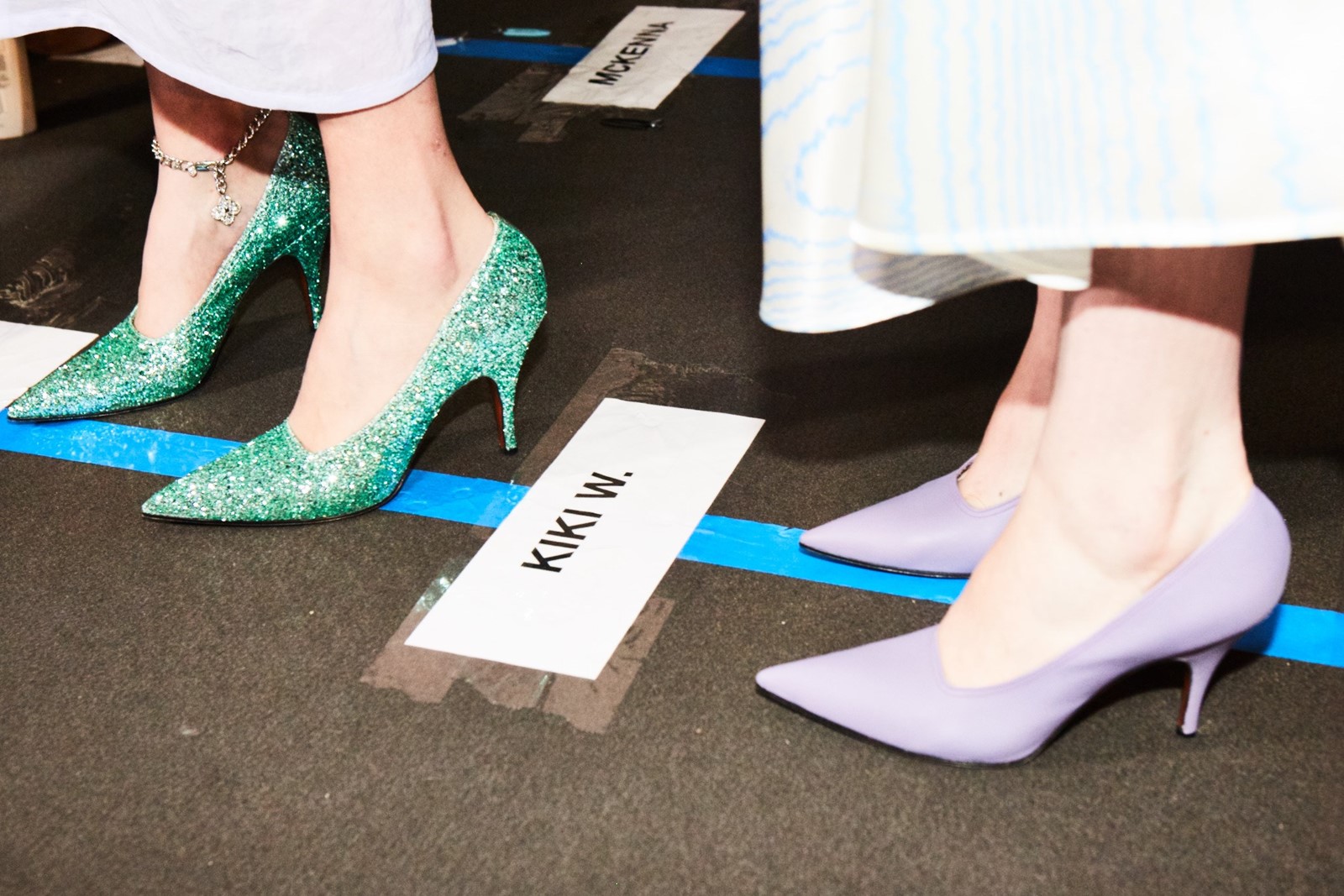
The pastel, in the Rococo era, reflected that powerful feminine influence – both of Pompadour specifically (there was a shade of pink dubbed Rose Pompadour), and women in general. It was indicative of a shift away from the ball-breaking masculinity of the Baroque – at its height in France, where the focus was the glorification of Louis XIV, the Sun King who was perceived by his people (and, indeed, himself) as a God on earth. Baroque style is robust, muscular, decidedly male – heavy and forceful. By contrast, as the 18th century dawned and Louis’ reign passed to his great-grandson, Louis XV, style moved to the intimate, the personal, the delicate – the feminine. Women wielded new-found power as salonistes, leading enlightened Enlightenment discussions in their homes and shifting cultural tastes – again, Pompadour’s support of Voltaire set the precedent. Everything was drenched in pastels, from curved and counter-curved carved boiseries and flowery painted panels, to fat-stuffed damask chaises and feather-topped canopy beds, to all those paintings of Fragonard and Boucher starring pink-cheeked putti and giggling shepherds and shepherdesses suspiciously attired in a few million francs worth of Lyons silk. And, of course, the clothes followed suit, for men and women. Rose-tinted glasses? The notion originates here. Women ruled.
The second great era of pastel dominance came 150 years later, around the turn of the 19th century. In England, that coincided with a move from the Victorian era to the Edwardian – and from dour decades of official mourning into something effervescent and sparkling. Colours lightened, like the mood – soothing is a term used for pastels, and the mood across the world was ebullient and joyful during this era, dubbed in France the “Belle Époque” (“beautiful age”) and often dubbed the “Golden Age” elsewhere. The delicate but luxurious tastes of the 18th century, with Ladurée macaroon colours used for everything from decor to dress – creating a sumptuous environment of femininity. Which is why, a hundred or so years after they fell out of fashion, they’re having another renaissance. Beckham wasn’t the only pastel proponent at New York fashion week, but hers were best.
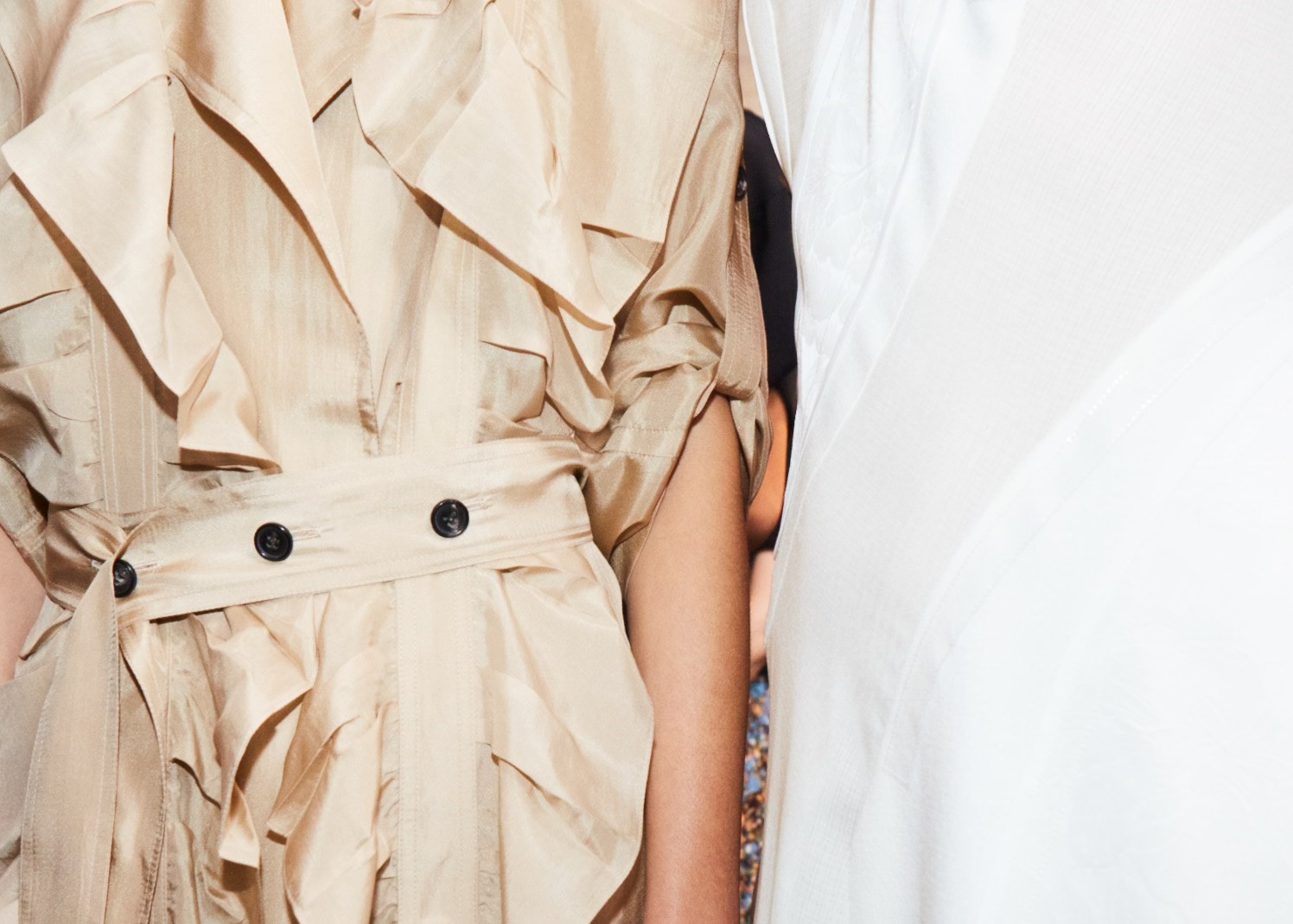
Femaleness has been important to Beckham ever since she was in the Spice Girls, with their raucously declarative ‘Girl Power’ message encouraging an entire generation of young women to assert themselves and make themselves heard. It’s straightforward, but the Spice Girls’ brand of third-wave feminism was profoundly accessible, and taught girls simple lessons. Don’t take any shit; stand up for yourselves; have fun. And be feminine. Beckham is very much echoing those sentiments with her clothing. How about thinking that, when you think pink? It’s not just feminine; it can be feminist.
